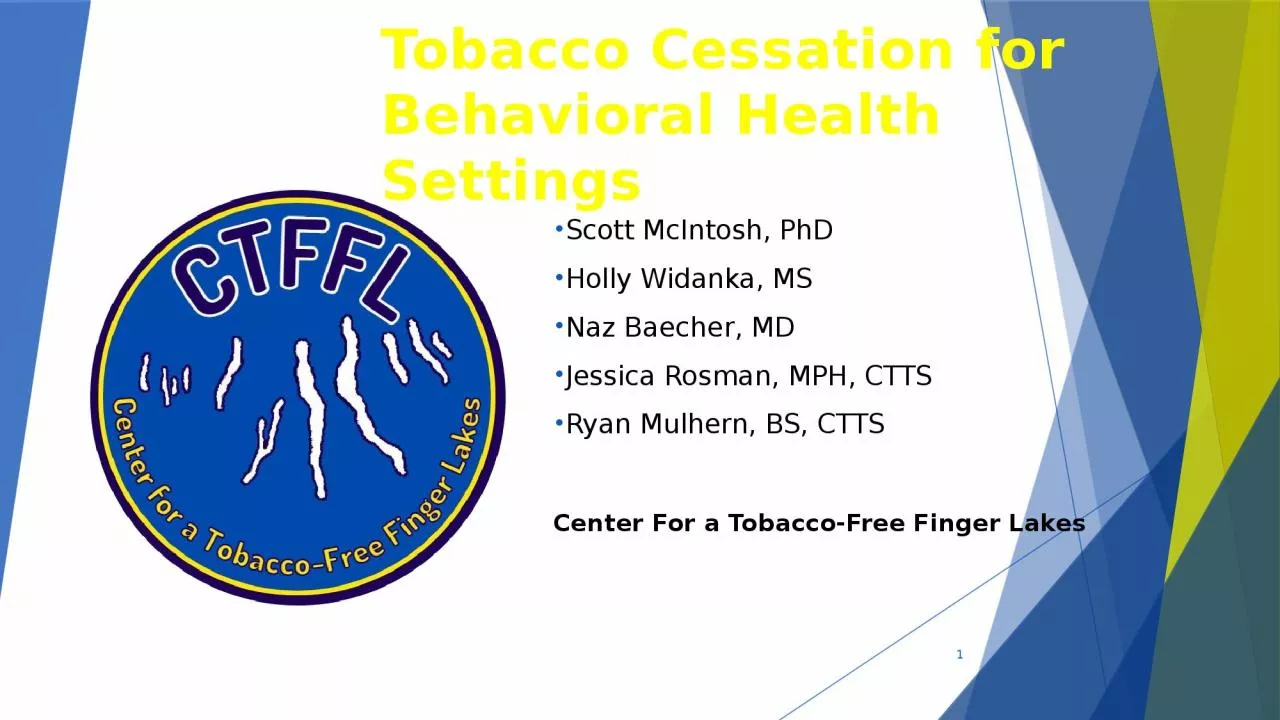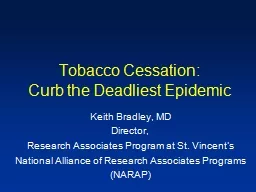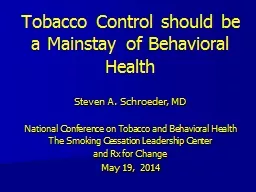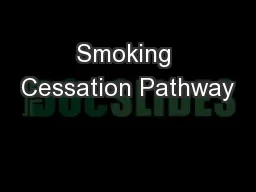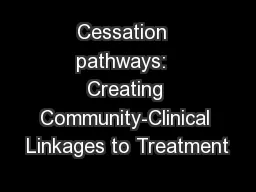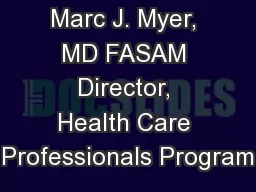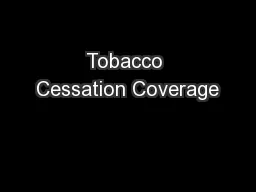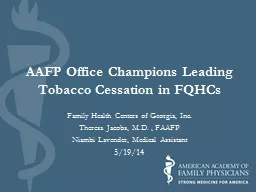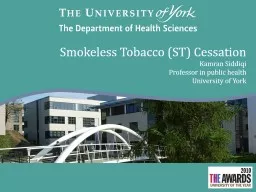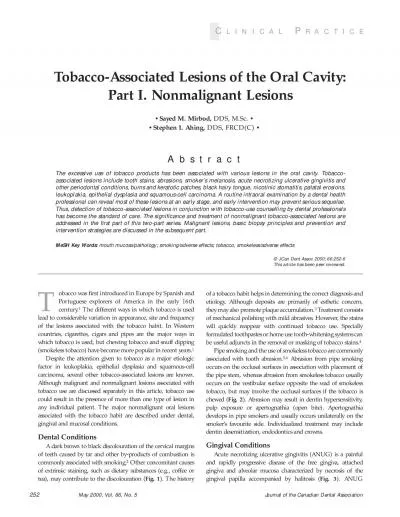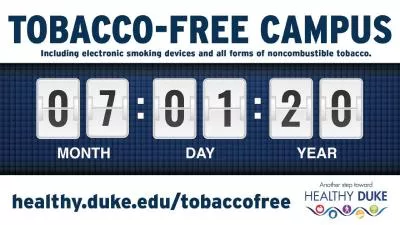PPT-Tobacco Cessation for Behavioral Health Settings
Author : joy | Published Date : 2023-05-31
Scott McIntosh PhD Holly Widanka MS Naz Baecher MD Jessica Rosman MPH CTTS Ryan Mulhern BS CTTS C enter For a TobaccoFree Finger Lakes 1 Center for a TobaccoFree
Presentation Embed Code
Download Presentation
Download Presentation The PPT/PDF document "Tobacco Cessation for Behavioral Health ..." is the property of its rightful owner. Permission is granted to download and print the materials on this website for personal, non-commercial use only, and to display it on your personal computer provided you do not modify the materials and that you retain all copyright notices contained in the materials. By downloading content from our website, you accept the terms of this agreement.
Tobacco Cessation for Behavioral Health Settings: Transcript
Download Rules Of Document
"Tobacco Cessation for Behavioral Health Settings"The content belongs to its owner. You may download and print it for personal use, without modification, and keep all copyright notices. By downloading, you agree to these terms.
Related Documents

